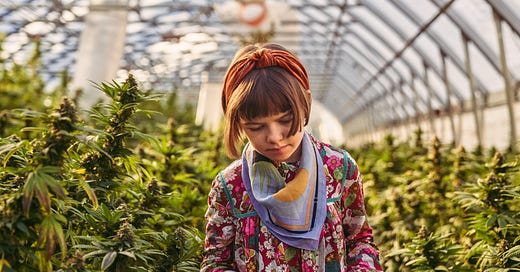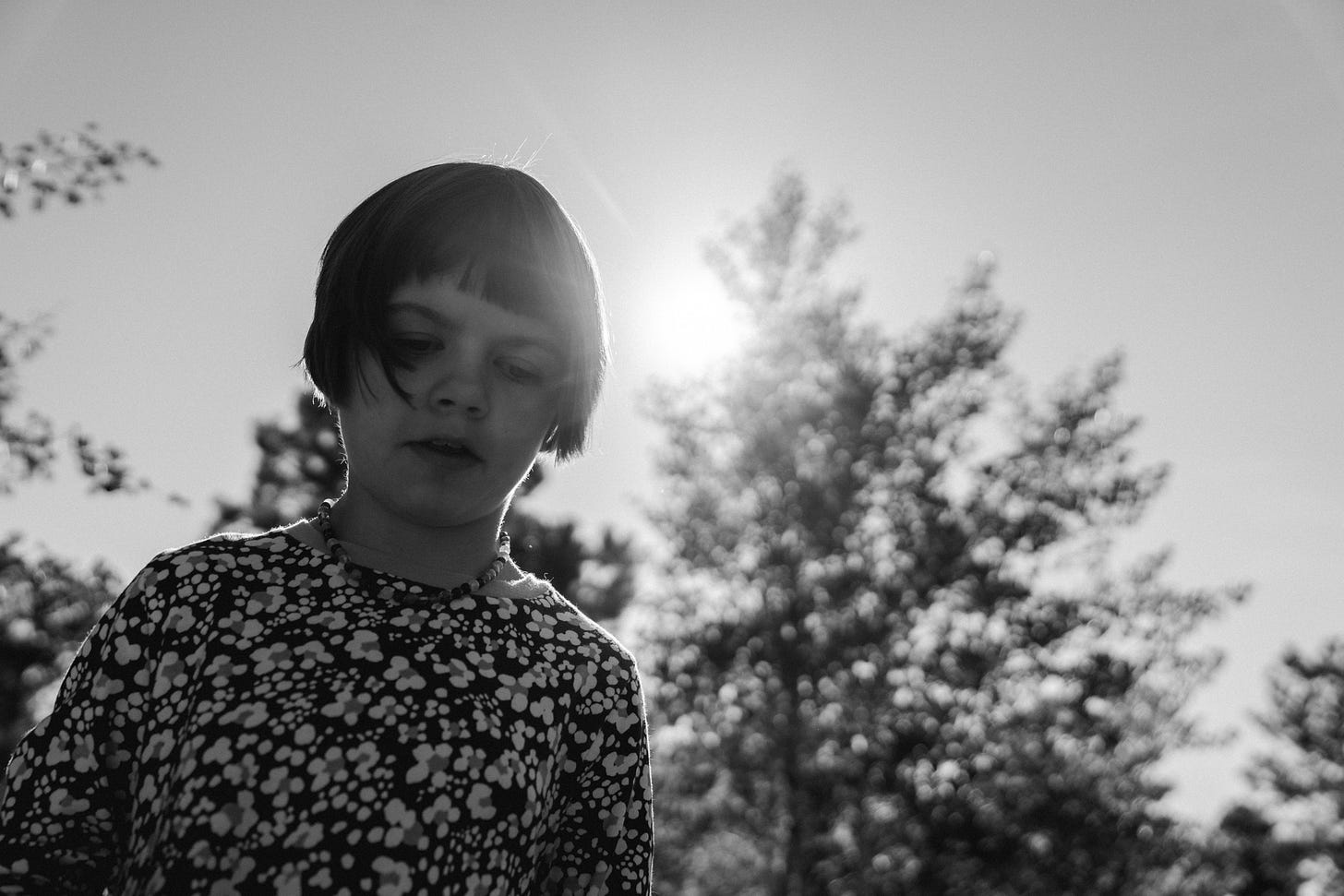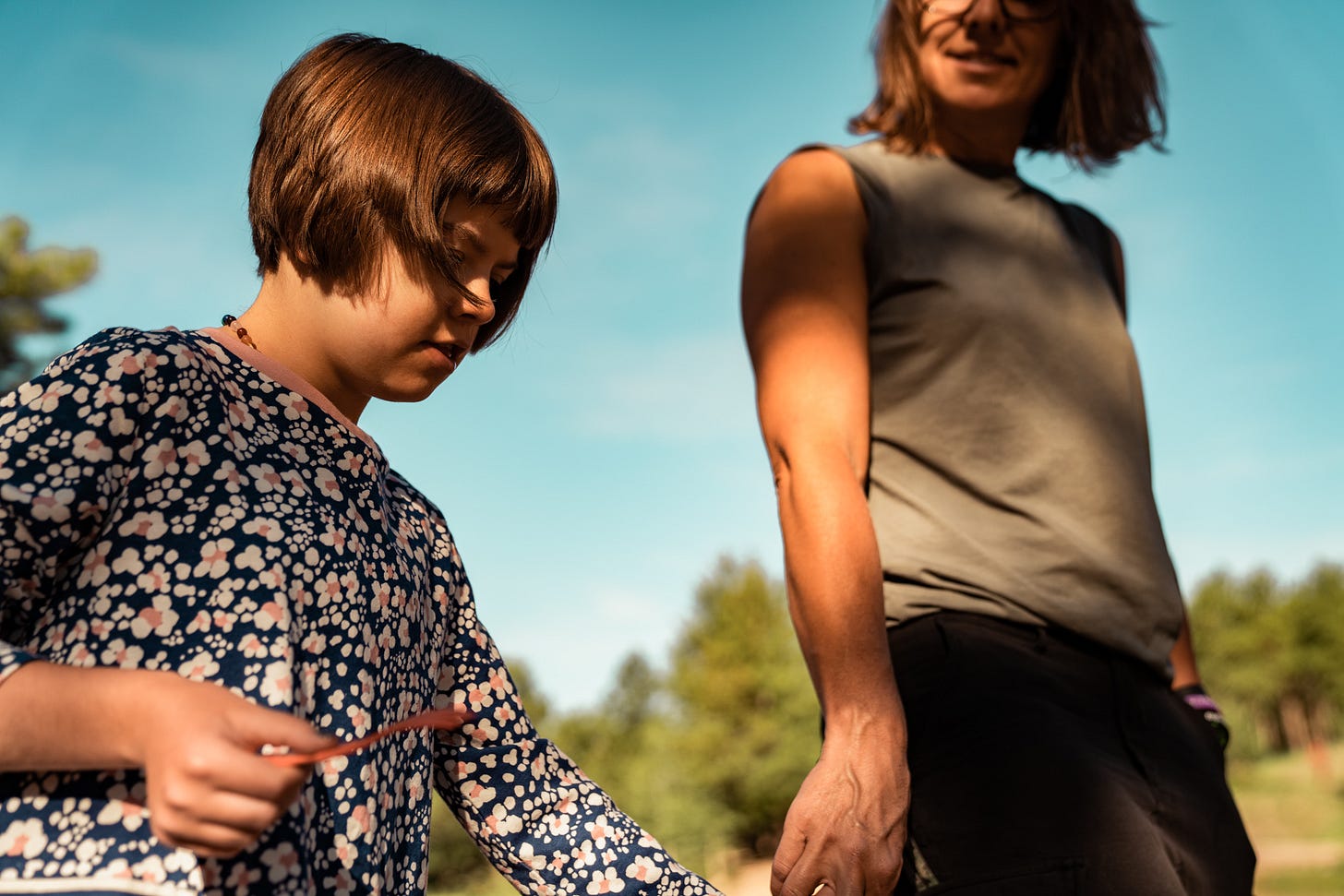Two years ago I was at La Bodega Gallery, an art gallery in San Diego’s Barrio Logan. That summer, I was writing a quick story for Cannabitch, back when it was a print column for San Diego CityBeat, about an exhibit coming to town called “Face of Cannabis” by Colorado artist and photojournalist Nichole Montanez.
Not long before the exhibit, I was being tattooed by local tattooist Rob Benavides. We had been introduced because of our mutual love of ink and weed—while I was being tattooed, I decided to write a short Cannabitch column about using high-dose CBD topical balms during the tattoo healing process (they work!).
We also talked about the cannabis activism he engages in with his wife, Allison. The couple has a kid, Robbie, who suffers from a dangerous and debilitating epilepsy disorder—before he hit 10 years old, Robbie would sometimes endure a couple of dozen grand mal seizures a day.
As it turns out, one of the only things to get his epilepsy under control was the use of CBD and cannabis, which in the past has been illegal and highly controversial, however effective a treatment it has proven to be. Once they discovered that CBD in conjunction with certain pharmaceuticals worked, they became activists and the rest is history (today, Robbie leads a mostly normal life as a happy and healthy kid).
Benavides mentioned that, during the earlier days of their activism, they were approached by Montanez, who was in the process of shooting and compiling what would end up being 284 portraits of children who use cannabis for medical reasons. The resulting project became “Face of Cannabis.”
In my opinion, being a good journalist requires a few specific personality traits that should be found in any one reporter across the profession. One of the most important is skepticism. When it comes to reporting on medical cannabis, Montanez possesses that in spades.
“In 2010 we passed a medical cannabis bill here in Colorado and I—just like a lot of other people—just thought it was an excuse for people to get high. I didn’t really believe in it,” she says, explaining her path from non-believer to full-blown medical cannabis documentarian.
In 2013, Montanez found herself laid off from her local newspaper when a colleague suggested she write a freelance piece about the rise of medical cannabis in Colorado.
Specifically, the story would focus on Charlotte Figi and her family. Figi, who began using CBD oil at age five to treat the devastating symptoms of Dravet Syndrome, has since become the poster child for pediatric medical cannabis use.
The youngest medical cannabis applicant in Colorado at the time, she went from suffering 300 grand mal seizures a day and not being able to walk, talk or eat to having only three or four seizures a month. The only thing that helped her approach a life that was even remotely normal was starting an experimental CBD oil treatment.
Montanez had followed Figi’s story closely, particularly because her own niece, Hailey, was similarly paralyzed by Dravet Syndrome and searching for a cure.
“I figured even if I didn’t believe in it, other people seemed to find it interesting so maybe it was worth a story. I approached [the Figis] about a story and they agreed,” Montanez said.
“I went to shoot photos at their house and almost immediately, I changed my mind about medical cannabis. Charlotte was eating food herself after previously being tube-fed. My niece could no longer feed herself and recently had a feeding tube installed.”
The story didn’t come out for another year after that. The Figis were reluctant to publish due to the precarious nature of being public with a child who uses cannabis products, even for health reasons. When the paper picked up the story again in August 2013, Montanez was inspired to include portraits of other children whose families moved to Colorado specifically for their now-compassionate stance on medical cannabis use for children.
Those portraits comprise Face of Cannabis. Montanez thought it would be a quick project and that she would eventually move on to other topics. But over the years, families kept contacting her asking for their children to be included and photographed. Cannabis activists in other states, like Georgia, for example, used images of the children to pass similar pediatric medical cannabis bills in their own legislatures. Eventually, she compiled all of these images into an exhibit, which debuted in Colorado in 2014.
Throughout this process, Montanez tells me she had no idea she was documenting the rise of medical cannabis use and activism at such a pivotal time. Since she began photographing children, almost every state in the nation has seen shifts towards cannabis legalization. As far as anyone can tell, hers is the only project that has documented this medical development.
No longer a skeptic of the medical uses of cannabis, Montanez is resolute in keeping the focus on the children whose faces appear in her work.
“The children need to be kept at the forefront of this movement,” Montanez says, referring to the greater umbrella of pro-cannabis activism that spans recreational to medical in nature.
“These kids kicked in the door and made sweeping changes. Now, as cannabis is becoming more mainstream and set to be a multi-billion dollar industry, I want to make sure that they don’t get lost and put back inside. They deserve more credit than that,” Montanez says.
I do not exaggerate when I say I get chills thinking of Figi—there are goosebumps all over my arms and legs as I type this very sentence. It’s hard to overstate her legacy. For starters, the work to find her treatment resulted in the formation of both a high CBD strain and a company, both called Charlotte’s Web. I’m comfortable calling the company one of the gold standards of mass-produced CBD.
CNN correspondent Dr. Sanjay Gupta interviewed the Figis for the documentary Weed in 2013, which propelled the family and their struggles onto the national spotlight. From there, an avalanche of legislative advances regarding medical cannabis followed. Nowadays, and as a direct result of the research produced from Charlotte’s struggle and the caregivers-turned-activists around her, there is cannabinoid-based FDA-approved oral medication, called Epidolex. It has been available for use in treating two types of epilepsy since 2018. I don’t think it’s an exaggeration to say that, in some sense, Charlotte changed the world. Every jurisdiction that goes adult-use legal owes a debt of gratitude to the medical activists who paved the way—Charlotte is at the top of that list.
La Bodega’s Face of Cannabis exhibit was an emotional experience and one that I think about often, especially now that the gallery’s location has since closed and moved down the block. I spent a lot of my pre-pandemic social life there—one friend or another was always exhibiting something.
Many of the children photographed, now several years older or fully into adulthood, traveled to San Diego to see it in person. In particular, there was one man who looked to be somewhere in his late 20s or early 30s. He was accompanied by a full-time nurse, a medical response Golden Retriever, and his father.
While touring the gallery, the man had a seizure and his team instantly snapped into action. His father ran to the bar to get water. His dog stood at the ready, poised to bark for more help or provide comfort, as needed.
While all of this was happening—the man’s eyes rolling back in his head and his stiff body requiring additional support—his nurse rummaged through a fanny pack and retrieved a standard-issue vape cartridge and battery. She pressed the button, raised the mouthpiece to the edge of the man’s nostril, and, with each sharp, labored breath he took, he inadvertently inhaled what I later learned was high-grade CBD oil.
Within 10 or so seconds of inhaling the man’s entire body relaxed and his eyes rolled back forward. He shook his head as if he had just gotten out of a pool and looked around, blinking furiously and obviously trying to find focus. His very good boy gave him a big lick and nuzzled his shoulder because dogs are fucking awesome. People milled about, not wanting to stare but also acutely aware of this manifestation of why we were all gathering in the first place. Many looked on with empathetic, knowing gazes—their loved ones were just as sick, too, and they relied on CBD oil for their survival.
As for me, this was the first time I had seen medical cannabis work so acutely. I stepped out for a second and quietly cried outside the gallery before I gathered myself and walked back in. I remember telling my date that I would never forget it, that there was no going back after seeing this. It sounds dramatic, but it was literally an experience of life versus death, all held together by a seemingly simple CBD oil vape cartridge.
Whenever someone accuses cannabis activism of being just about stoners getting high, this is a story I like to share. Even though it’s an extreme example, it is no less real, and these patients cannot be forgotten even as the movement moves on to bigger, bolder, and more fun pursuits. In many states, there is still not solid access to cannabis for children who need it. The same goes for adults who need it, too.
“Even though it seems like medical cannabis is ubiquitous and we may think that parents do not have an uphill battle to give it to their children, the fight for access can still be a problem due to the stigma and draconian regulations that still face this plant,” says Heather Jackson, co-founder and president of Realm of Caring, a cannabinoid research nonprofit. Jackson and Charlotte’s mom, Paige, founded RoC with the Stanley brothers—the men responsible for creating Charlotte’s Web, both the weed and the company.
Charlotte Figi died at 13 years old on April 8, 2020. She had pneumonia, which eventually required hospitalization. It also caused her seizures to return, which resulted in respiratory failure and cardiac arrest. She reportedly died peacefully in her mother’s arms. This week, on April 7, Realm of Caring is holding a virtual benefit concert in Figi’s honor called Rock the RoC. The Avett Brothers, Jason Mraz, Michael Franti, and many others will be performing. Sanjay Gupta will also be making an appearance. Tickets, which are free, can be found here.
This newsletter has been quiet—I am sorry about that! Freelancing and all the juggling that comes with self-employment is hard and I’ve been feeling the weight lately, so I appreciate you hanging with me. Here’s what I’ve been up to:
For Forbes I wrote about Luke Scarmazzo, who is in the middle of serving a 22-year-long sentence for operating a state-legal medical dispensary in California. He was denied a pardon at the last minute, despite assurances from those inside Trump’s administration (cough cough Ivanka Trump) that he would be on the list. This story consumed my brain for a few weeks and is incredibly heartbreaking but it underscores the need for federal legalization now. It went viral, which is pretty cool. Luke remains imprisoned, which is not.
This story, which I wrote for SF Gate, pissed off just about everyone involved in it, from my top editors all the way down to my sources (my direct editor was a dream to work with and she loved it, lol). The top brass was concerned that I wasn’t outraged about border politics enough, while the woman who owns the hotel I wrote about is pissed that I focused too much on the border (I guess I was interrupting her *vibes*). You can read the details and decide for yourself, but to me, all I hear is Goldilocks (just right). It’s about a very strange border town in San Diego County and the hot springs hotel that exists there.
A month ago I jetted back up to the Emerald Triangle to pal around with Johnny Casali, a legendary southern Humboldt grower. He got one of Humboldt County’s first tourism licenses for a grow site, which is pretty cool. Especially since he did 8 years in federal prison for growing weed back in the 90s. I wrote about this for SF Gate. PS, his weed is the best. I am growing some of his proprietary cultivars in my yard as I type.
I wrote about Seth Rogen’s cannabis brand, Houseplant, and its launch in CA/the United States for Forbes.
Here’s a fancy sex toy line that boasts gold finishes and Swarovski crystals. Without going into too much detail, allow me to assure you: they work! For Forbes.
There’s a new docuseries detailing how the War on Drugs directly targeted Black America. For Forbes.
For WeedWeek I wrote about pot companies embracing video marketing as a result of Covid. I also think this is a good thing because budtenders are expected to know quite a lot and, in my opinion, they are not properly paid to be responsible for so much.
Dabs are going mainstream. I wrote about the marketing challenges behind this for WeedWeek.










Thank you for this story. Tears.
Dear Jackie, Thank you for your story. I have the deepest respect for the Figi family and all the work that the Stanley Brothers have advanced selflessly to help countless people of the world. However, it is not accurate to state that this was the foundation to the launch of Epidiolex as the first cannabis-based pharmaceutical for epilepsy. Rather, that work on cannabidiol pre-dated developments in Colorado by many years, and subsequently, these programs rather occurred in parallel.
Ethan Russo, MD